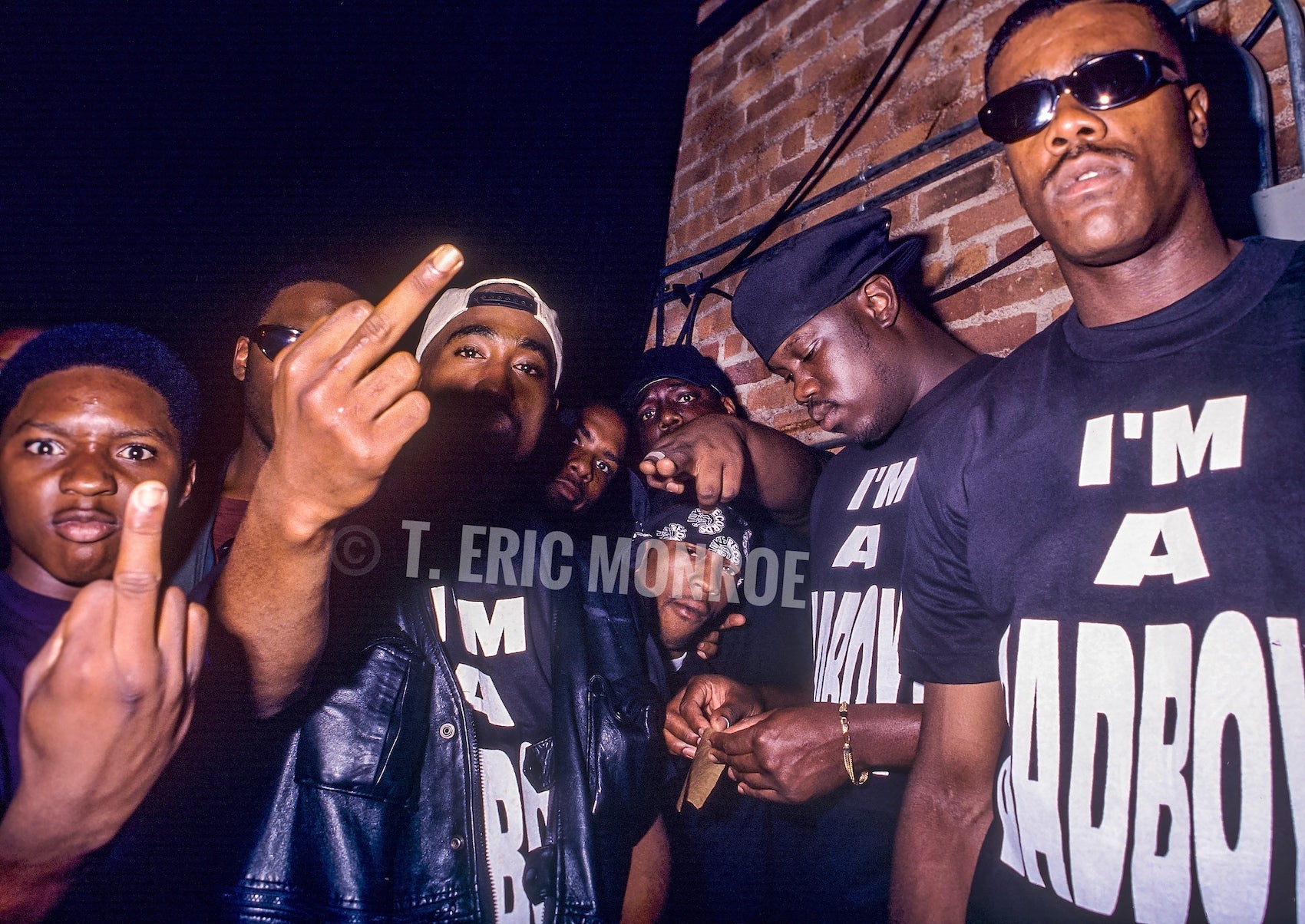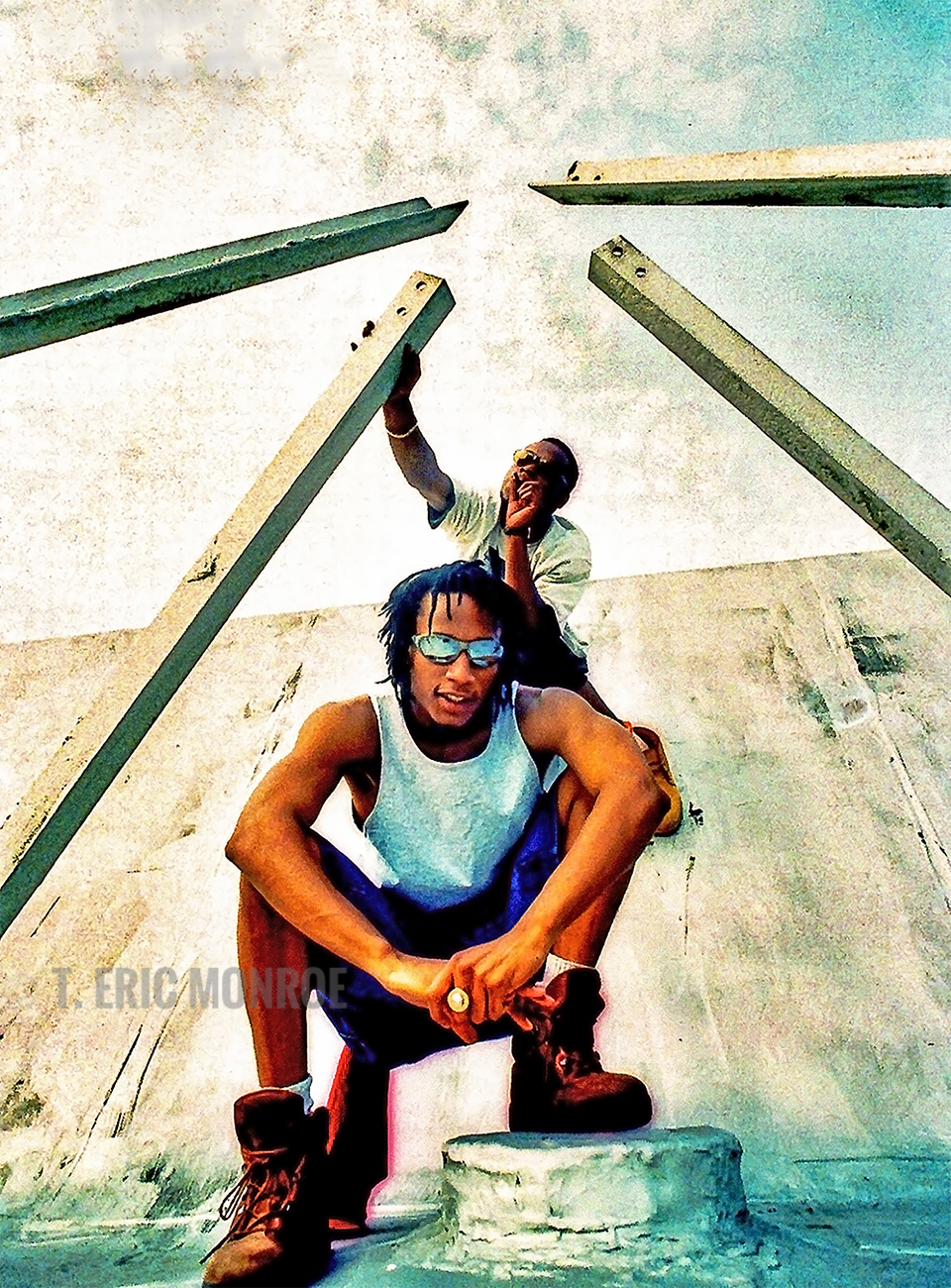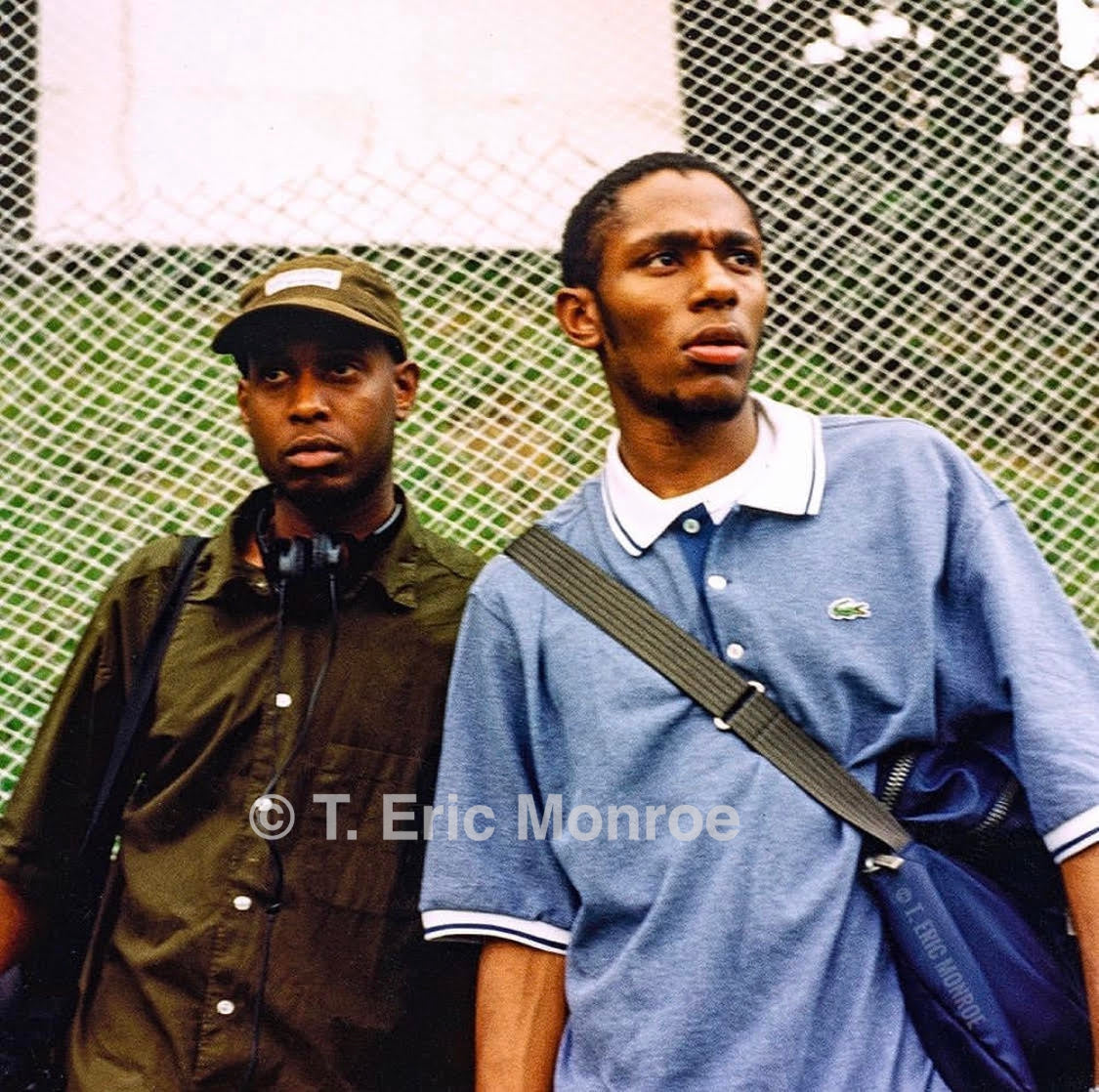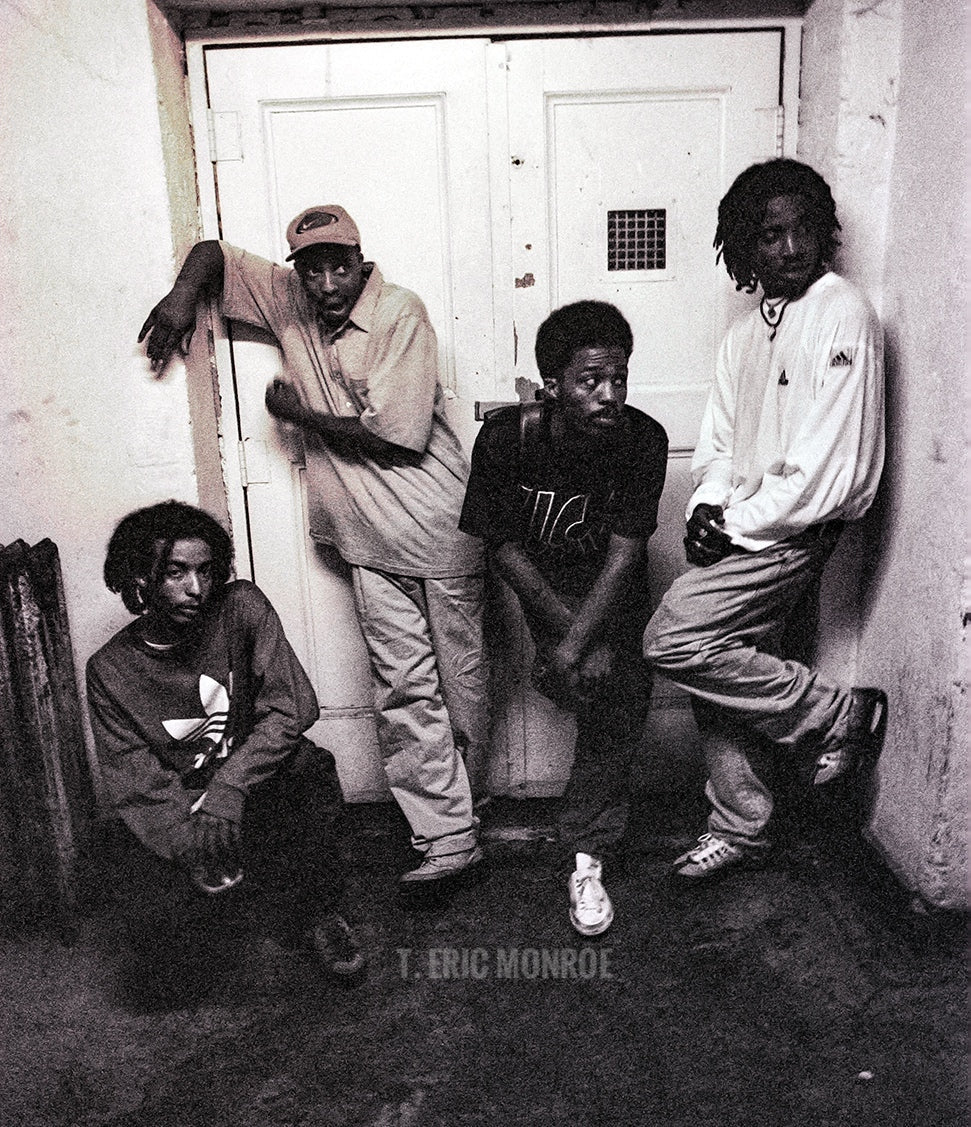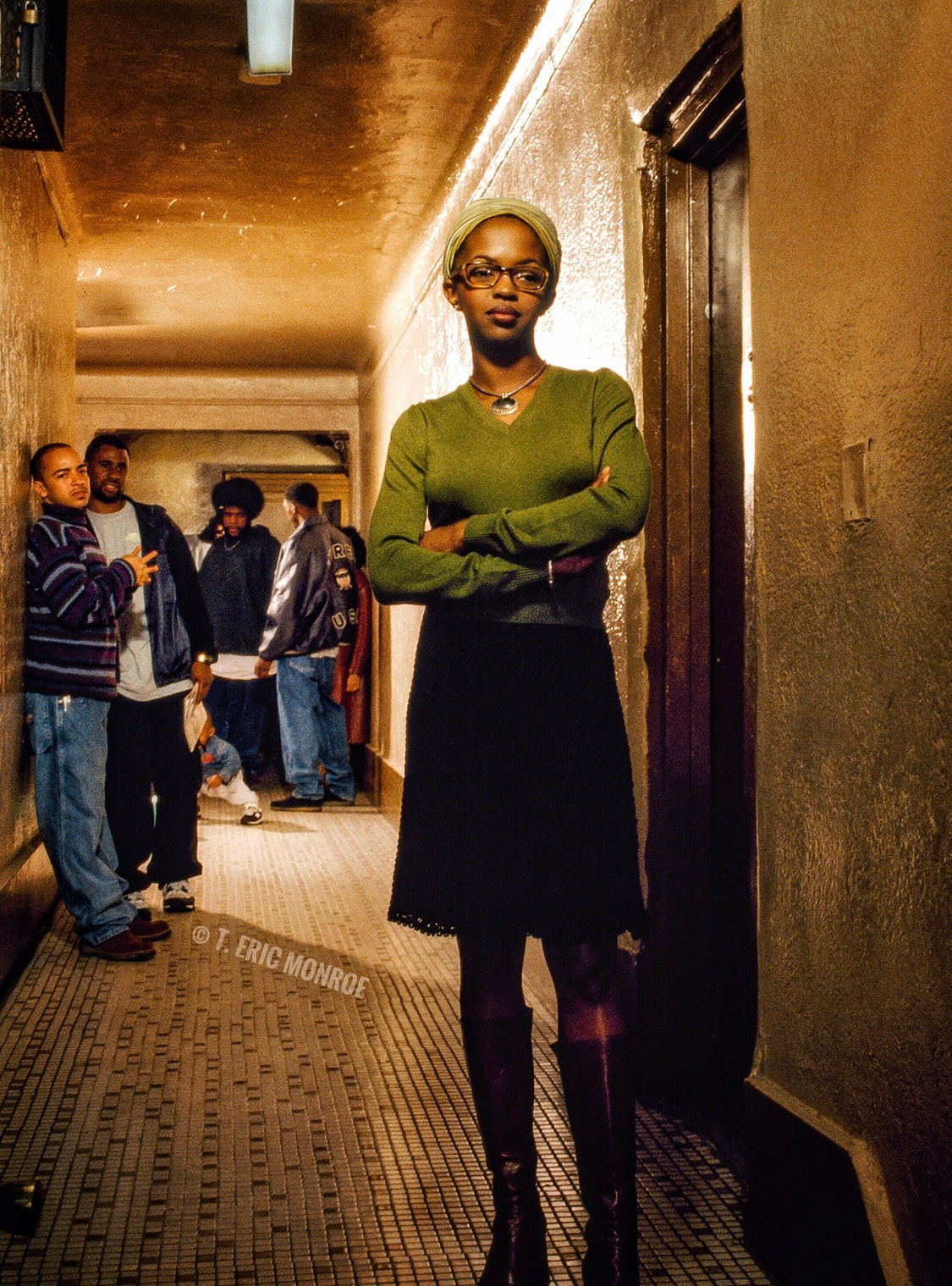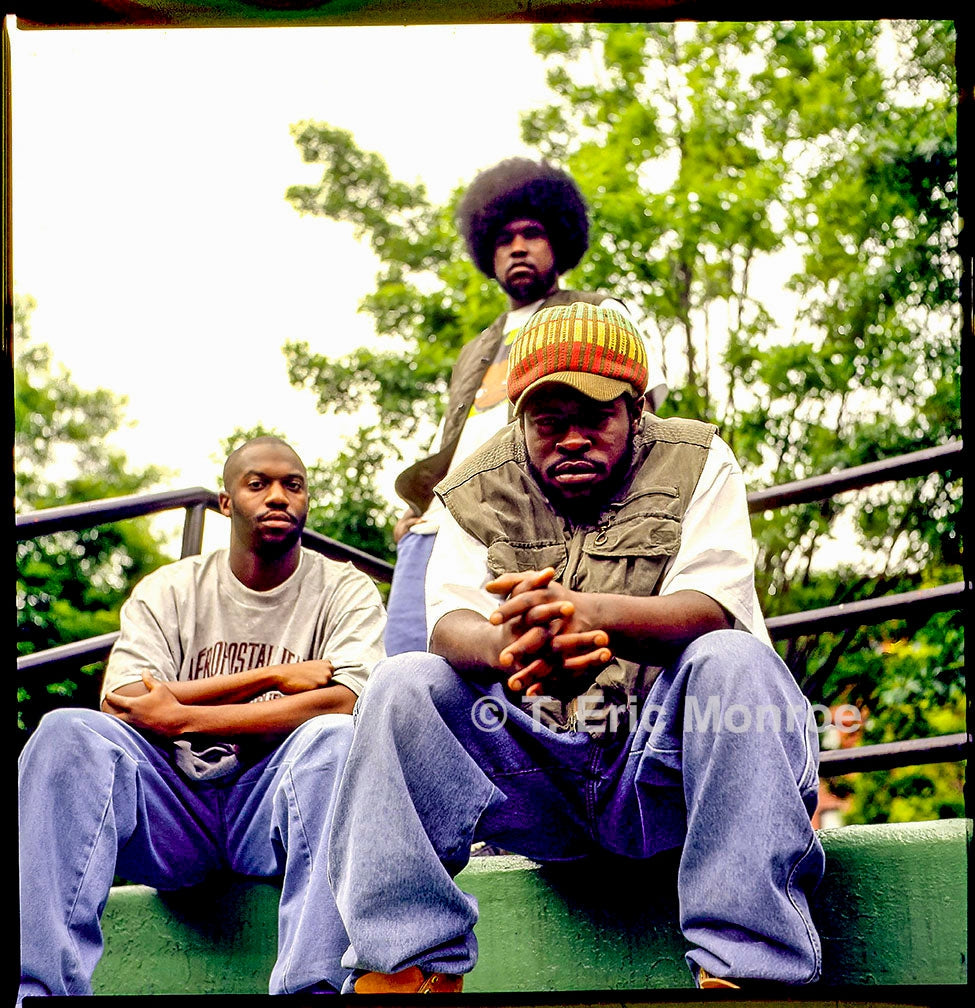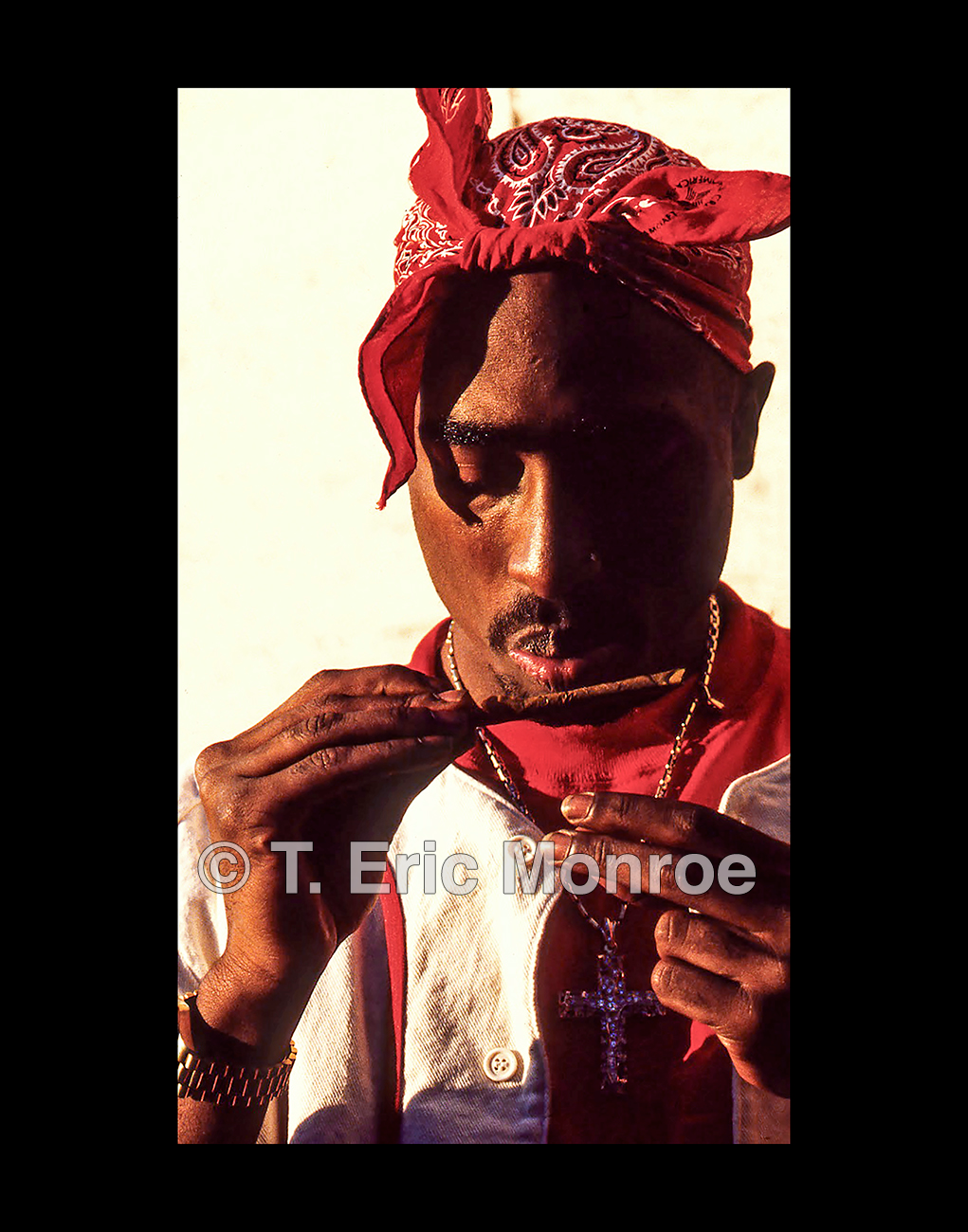Moments
It wasn’t until 2011 when I was sorting through slide photographs and beginning to catalog my images that I seriously took a look at that one slide of a dude giving me the finger with a strong shadow on his face…"No f’n way!" I said, shocked I didn’t realize the guy with the shadow in his face was Tupac.
The publicist gathered the guys in the group, Tek and Steel, and we all exchanged hellos. I suggested we go up to the roof. We had been up to the roof so many times in the past just to hangout, so going up there now with a camera was no different.
I motioned my hand asking to take one photo of him and Talib. They looked at each other and agreed. I stepped back, focused my Yashica Mat (124 G) camera, took one shot and thanked them as they headed for the stage.
Using the ambient light in the hallway I began shooting them from different angles. After the first 8 frames, the group relaxed and stopped doing the typical 'rap, yo!' poses, vibing with each other. Each of their actions was fluid, in sync with the movements of the others. If there was a low angle shift, someone else moved high; if someone gave a look, someone else would motion or adjust their look to stay complementary to the person adjacent.
When I arrived on set, the taping of the video was in full swing, and Lauryn and crew were handling all that needed to be accomplished, moving from scene to scene.
After meeting The Roots at the park, we started out with some shots near a playground area. Then, we moved and sat on large cement step or bleachers. Questlove, Black Thought, and Malik B. flowed in their space. I didn’t direct them. I just want to capture them in their essence.
I was able to capture a personal vibe among Tupac and his friends — guys from the groups Thug Life and the Outlawz. After the main taping was done, the news cameras started to leave. The bulk of the news press got the shots they needed to portray Tupac as the “Dangerous Thug,” which they would print in the next day’s papers. It felt like Tupac knew how to play with the media to keep his name in the press. He knew how to press their buttons, challenge them mentally; their only recourse was to portray him as a troublemaker. The pattern was reactive and visible.

